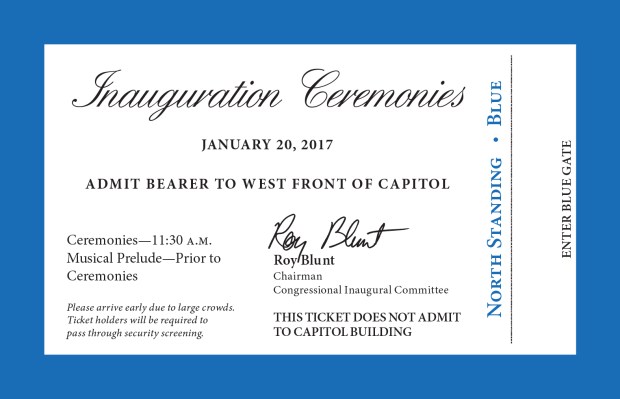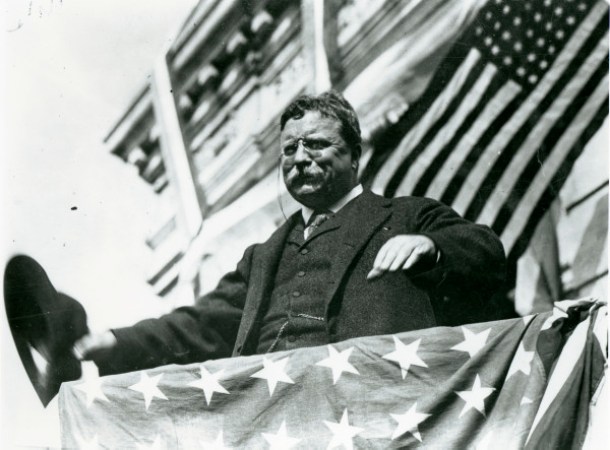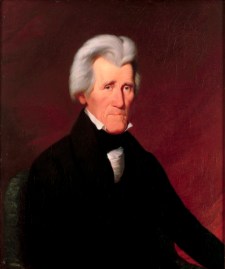No products in the cart.
Articles
Washington’s Bible, Lincoln’s Hair: Top Symbolic Inauguration Moments
[ad_1]
[ad_2]
President Barack Obama used Abraham Lincoln’s and Martin Luther King Jr.’s Bibles at his swearing in ceremony in 2013, two presidents used a chair George Washington sat in at his inaugural and George W. Bush wore his father’s cufflinks at the ceremony.
A week before the inauguration of the 44th president of the United States, it was still not clear if Donald Trump would also include such nods to history and symbolism on the historic day.
The Presidential Inaugural Committee’s director of communications declined to provide details about what Bible Trump will use or what poem will be read at the 58th presidential inauguration on Jan. 20.
Boris Epshteyn assured, however, the inauguration will be “full of symbols.” For example, he said, the parade will be shorter than in years prior because Trump wants to get to work as soon as possible. Trump plans to attend three balls, in contrast with Obama who went to 10 balls in 2009 and former President George W. Bush who attended eight balls to celebrate his first inauguration. Epshteyn said a shorter parade and a smaller numbers of balls — one of the three will salute the armed forces and first responders — symbolize Trump’s commitment to the American people and “getting to work” right away.
“The President-elect is representative of the people, Epshteyn said. “This inaugural is all about the people and the armed forces ball will be saluting the first responders so the EMTs, the firemen, the police, who help save lives in this country every single day. So that’s symbolic about thinking and honoring those responders across the country.”
He later added, “This inaugural is of the people by the people and for the people.”
Jim Bendat, one of the nation’s leading experts on presidential inauguration history and author of “Democracy’s Big Day: The Inauguration of Our President, 1789-2013” said “it’s pretty hard to predict what Trump” will say in his speech or if he’ll use objects with links to the past at his inaugural.
“We’ll just have to see,” he said.
Bendat added that including objects of historical importance in the inauguration is symbolic of how our country has evolved but also illustrates what traditions we want to continue.
Take a look at examples of symbolism from past inaugurations:
1: George Washington’s Bible: The Bible used by the nation’s first president during his oath in 1789 has been kept at the archives of the St. John’s Masonic Lodge in New York City. That Bible is still on display and four other presidents have used it during their swearing in: Warren Harding in 1921, Dwight Eisenhower in 1953, Jimmy Carter in 1977 and George H. W. Bush in 1989. George W. Bush also wanted to use that Bible in 2001, and it was brought in from New York to D.C. the day before the ceremony. But the inauguration day was cold and rainy and the St. John’s members who transported the Bible from New York would not allow for it to be brought outside in those weather conditions. So George W. Bush used a family Bible, instead. “It’s a link to the past,” Bendat said of the president’s use of a Bible.
2. Washington Chair: George Washington sat in a particular chair during the 1789 inauguration and that exact chair was preserved and then used in later inaugurations. Ulysses S. Grant used it in 1873 and James Garfield sat in it, too, at the 1881 ceremony.
3. Bible Not Required: There’s no requirement that a Bible be used during a presidential swearing in. John Quincy Adams, who was a lawyer, placed his hand upon a book of constitutional law when he took the oath in 1825. There were also some sudden inaugurations after the death of a president where no Bible or other book was used. Chester Arthur was sworn in 1881 in his own home following the death of James Garfield and there was no Bible at the house. When Theodore Roosevelt became president after William McKinley’s assassination in 1901, the oath was administered at a friend’s home where no Bible could be found. After Warren Harding died in 1923, Calvin Coolidge was sworn in without placing his hand on a Bible, though a Bible was on the table in his father’s home where the ceremony took place.
4. Lincoln’s Hair: In 1905, Teddy Roosevelt was sworn in as president and close to him was a lock of Abraham Lincoln’s hair. John Hay, Roosevelt’s secretary of state who worked under Lincoln 40 years earlier, sent him a locket that contained the former president’s hair. Roosevelt had been a great admirer of Lincoln and was so inspired by Hay’s gesture that he took the locket with him to the ceremony.
5. Open White House: Andrew Jackson, considered the first real Washington outsider to become president in 1829, took the term “open house” seriously on inauguration day. He invited the public to the White House and his supporters strolled in wearing muddy boots. They ruined the carpets, tore down the curtains and trashed the residence. The story goes that someone put a tub of whiskey out onto the White House lawn and the drunken party slowly left the White House. Opening up the White House was a pretty common occurrence in the 19th century, Bendat said. On Abraham Lincoln’s inauguration on March 4, 1865, it was estimated the president shook hands with about 6,000 people in just 3 hours. Among them was Frederick Douglass, who told Lincoln that his speech, trying to bring the country together at the end of the Civil War, was “a sacred effort.” According to Bendat, “That was the first time in U.S. history that the president had greeted and sought the opinion of a free, black man inside the White House.”
Published 2 hours ago | Updated 22 minutes ago





